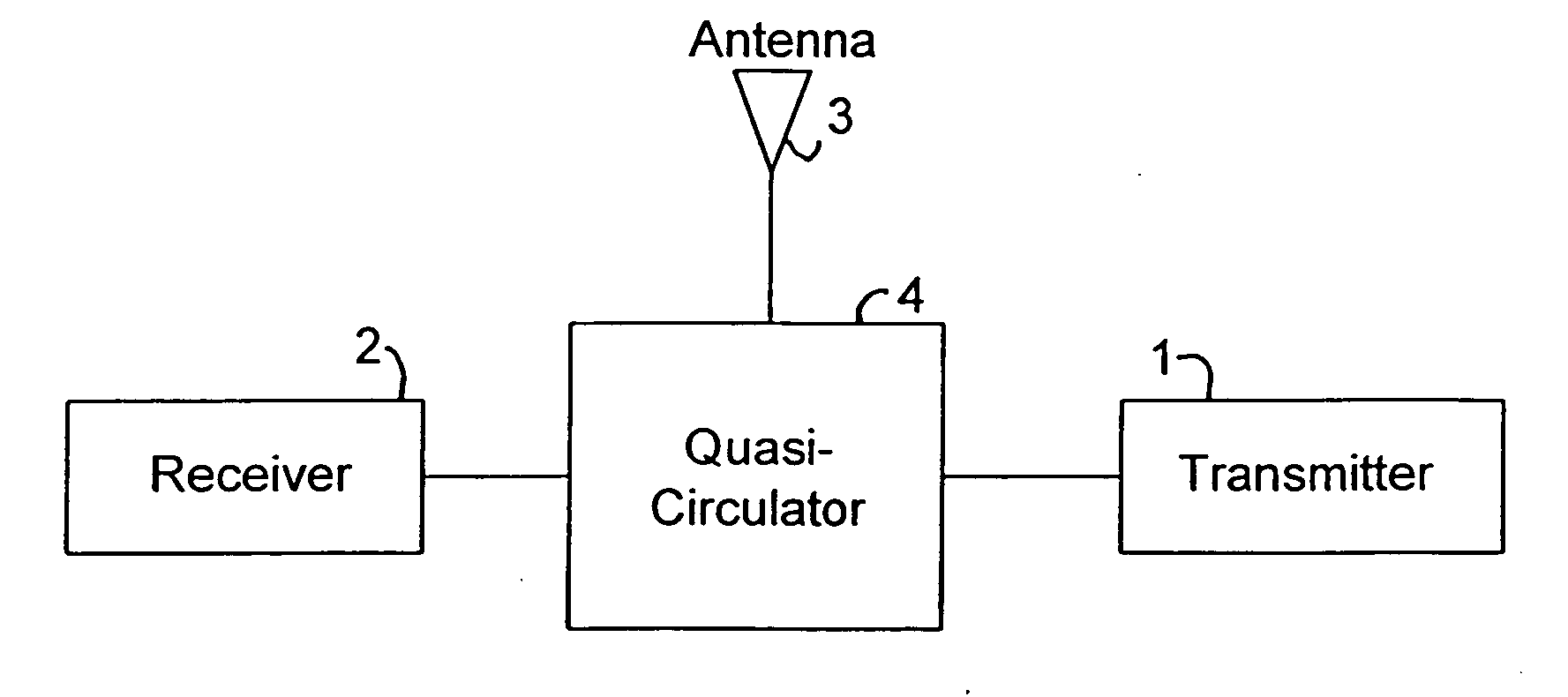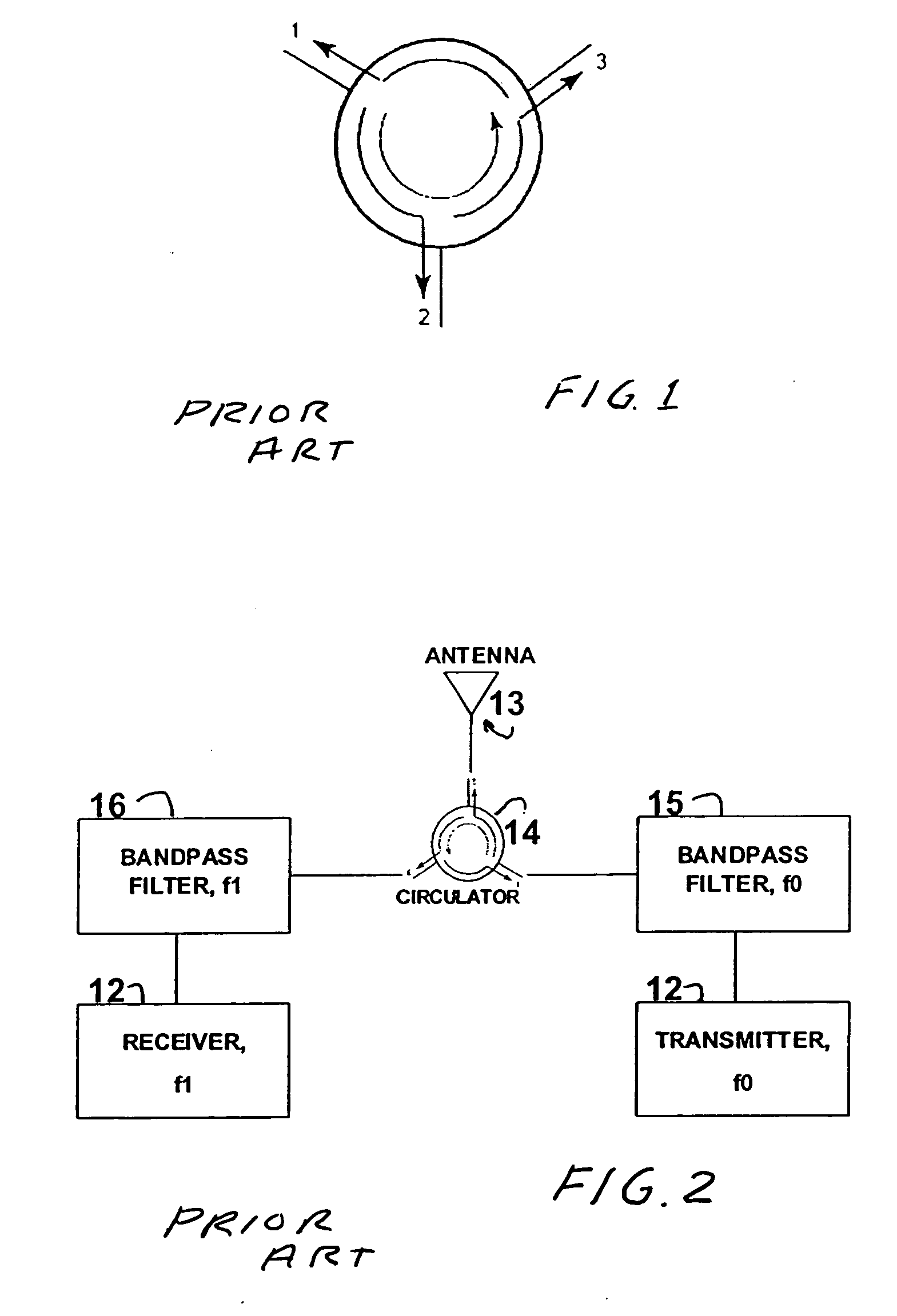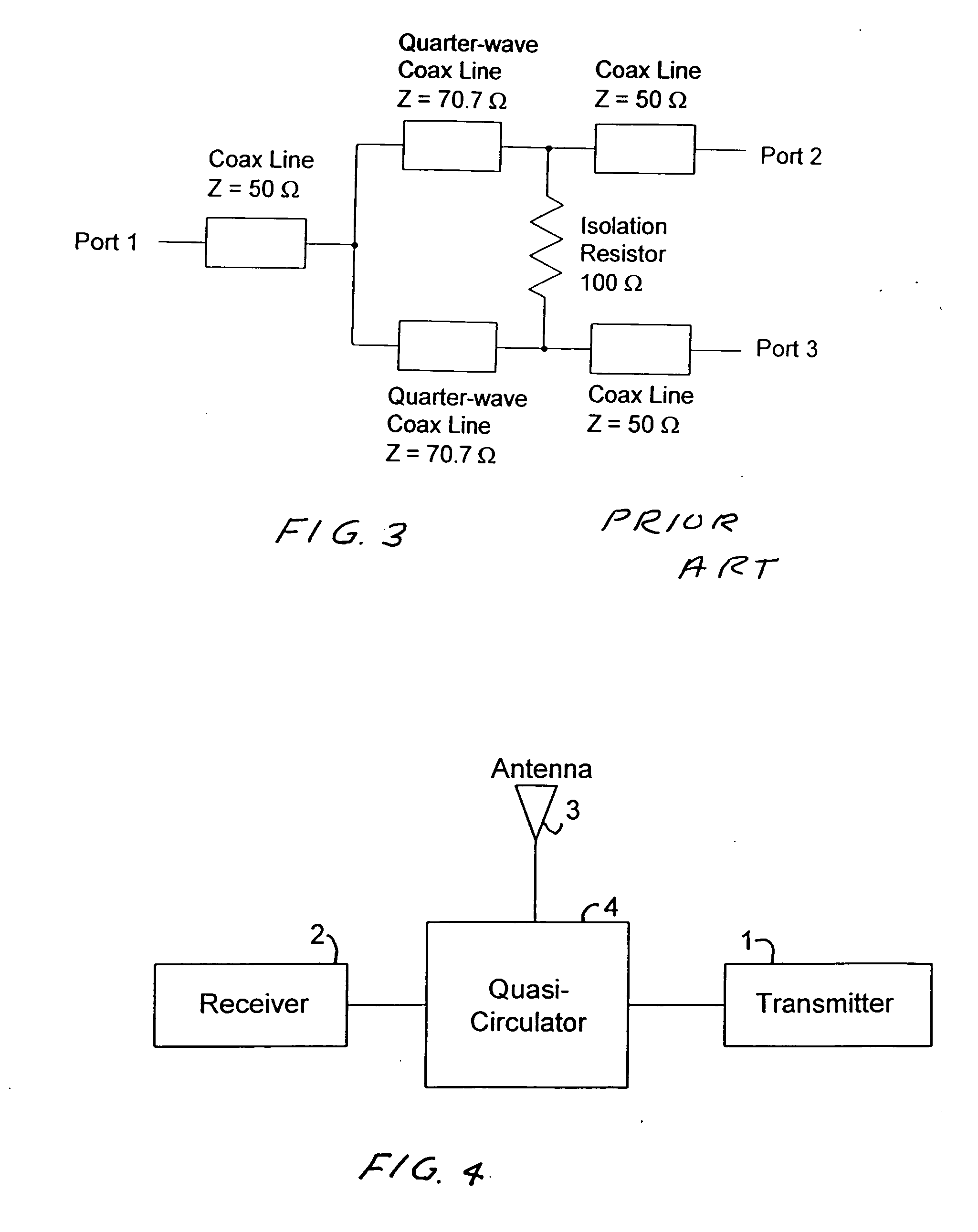Quasi-circulator for antenna multi-coupler system
a multi-coupler and antenna technology, applied in the direction of modulation, digital transmission, duplex signal operation, etc., can solve the problems of limiting the useful range of the receiver and the distance over which full duplex radio communication can be carried out, and affecting the operation of the receiver
- Summary
- Abstract
- Description
- Claims
- Application Information
AI Technical Summary
Benefits of technology
Problems solved by technology
Method used
Image
Examples
Embodiment Construction
Quasi-Circulator
[0021] A block diagram of a preferred embodiment of the present invention which Applicant refers to as a quasi-circulator is shown in FIG. 4. A detailed diagram of the FIG. 4 embodiment is shown in FIG. 5. The principal components of the system are: transmitter 1, receiver 2, antenna 3, and quasi-circulator 4. The principal components of quasi-circulator are: matched load 5, balun transformer 6, three 3 dB splitters 8, 9a and 9b and two 10 dB amplifiers 7a and 7b. Transmit radio signals from co-site transmitter 1 are divided equally by 3 dB splitter 8 into two paths, one leading to toward antenna 3 and one leading toward matched antenna load 5. Signals received by from antenna 3 are also equally divided by 3 dB splitter 9a into two paths, one leading toward matched load 5 and the other leading toward receiver 2. The signals from antenna 3 and co-site transmitter 1 circle in the quasi-circular to reach receiver 2 using different paths and are thus affected by the qua...
PUM
 Login to View More
Login to View More Abstract
Description
Claims
Application Information
 Login to View More
Login to View More - R&D
- Intellectual Property
- Life Sciences
- Materials
- Tech Scout
- Unparalleled Data Quality
- Higher Quality Content
- 60% Fewer Hallucinations
Browse by: Latest US Patents, China's latest patents, Technical Efficacy Thesaurus, Application Domain, Technology Topic, Popular Technical Reports.
© 2025 PatSnap. All rights reserved.Legal|Privacy policy|Modern Slavery Act Transparency Statement|Sitemap|About US| Contact US: help@patsnap.com



